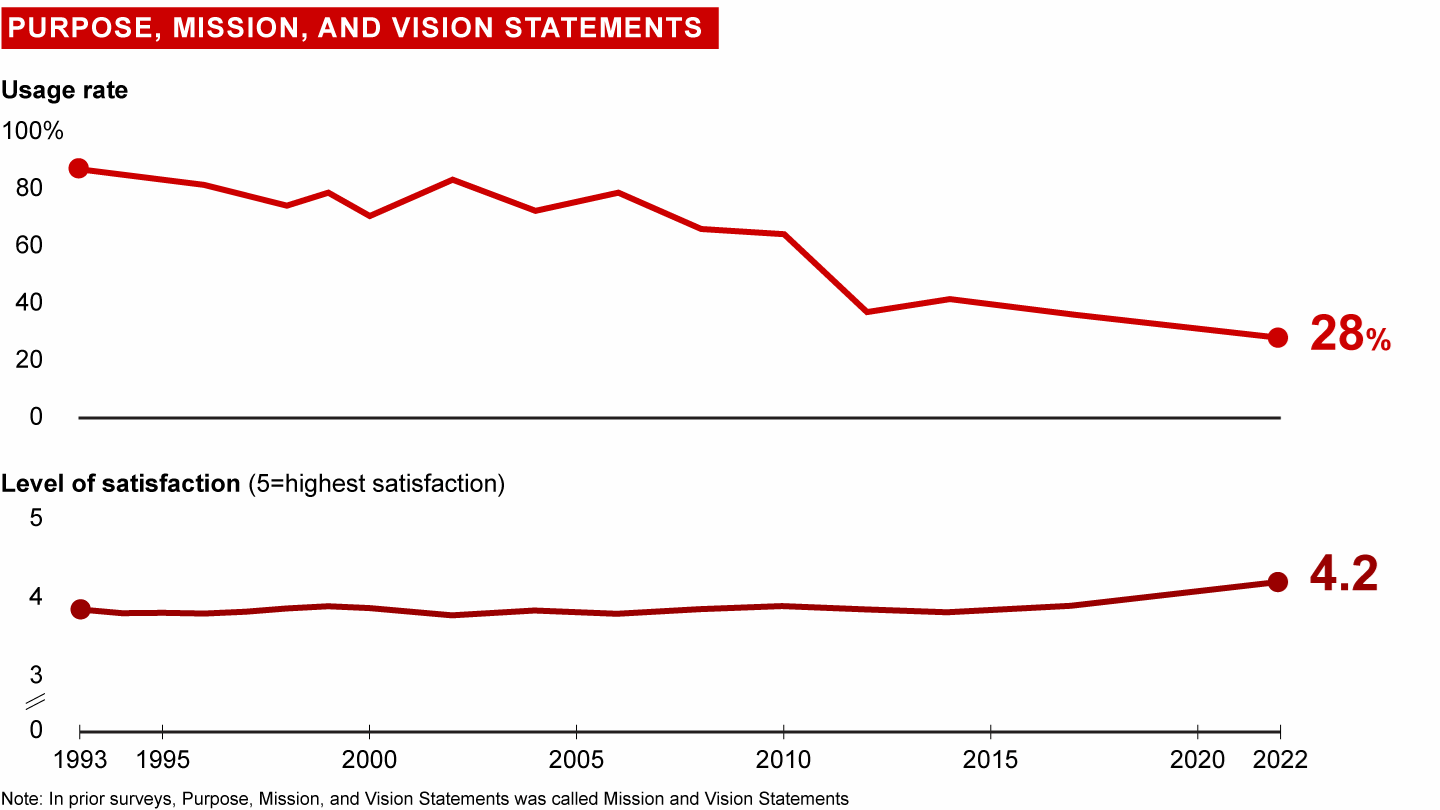Management Tools
What Are Purpose, Mission, and Vision Statements?
Purpose, Mission, and Vision Statements explain why a company exists, how it plans to achieve its goals, and what the business will ultimately achieve.
A Purpose Statement is an explanation of the company’s motivations and reasons for being, and why it works the way it does.
A Mission Statement is a definition of the company’s business, who it serves, what it does, its objectives, and its approach to reaching those objectives.
A Vision Statement is a description of the desired future state of the company. An effective vision inspires the team, showing them how success will look and feel.
Usage and satisfaction among survey respondents


How Are Purpose, Mission, and Vision Statements Implemented?
Typically, senior leaders will write the company’s Purpose, Mission, and Vision Statements with inputs from the broader organization. The development process usually begins by clarifying the purpose, then defining the mission, and then painting the vision. This requires leaders to:
- Clearly identify the corporate culture, values, strategy, and view of the future by interviewing employees, suppliers, and customers
- Address the commitment the firm has to its key stakeholders, including customers, employees, shareholders, and communities
- Ensure that the objectives are measurable, the approach is actionable, and the vision is achievable
- Communicate the message in clear, simple, and precise language
- Develop buy-in and support throughout the organization
Related Topics
What Are Common Uses of Purpose, Mission, and Vision Statements?
Purpose, Mission, and Vision Statements are used both internally and externally.
They are used internally to:
- Guide management’s thinking on strategic issues, especially during times of significant change
- Help define performance standards
- Inspire employees to work more productively by providing focus and common goals
- Guide employee decision making
- Help establish a framework for ethical behavior
They are used externally to:
- Enlist external support
- Create closer linkages and better communication with customers, suppliers, and alliance partners
- Serve as a public relations tool

Management Tools & Trends 2023
On the 30th anniversary of our survey, managers seem surprisingly upbeat.